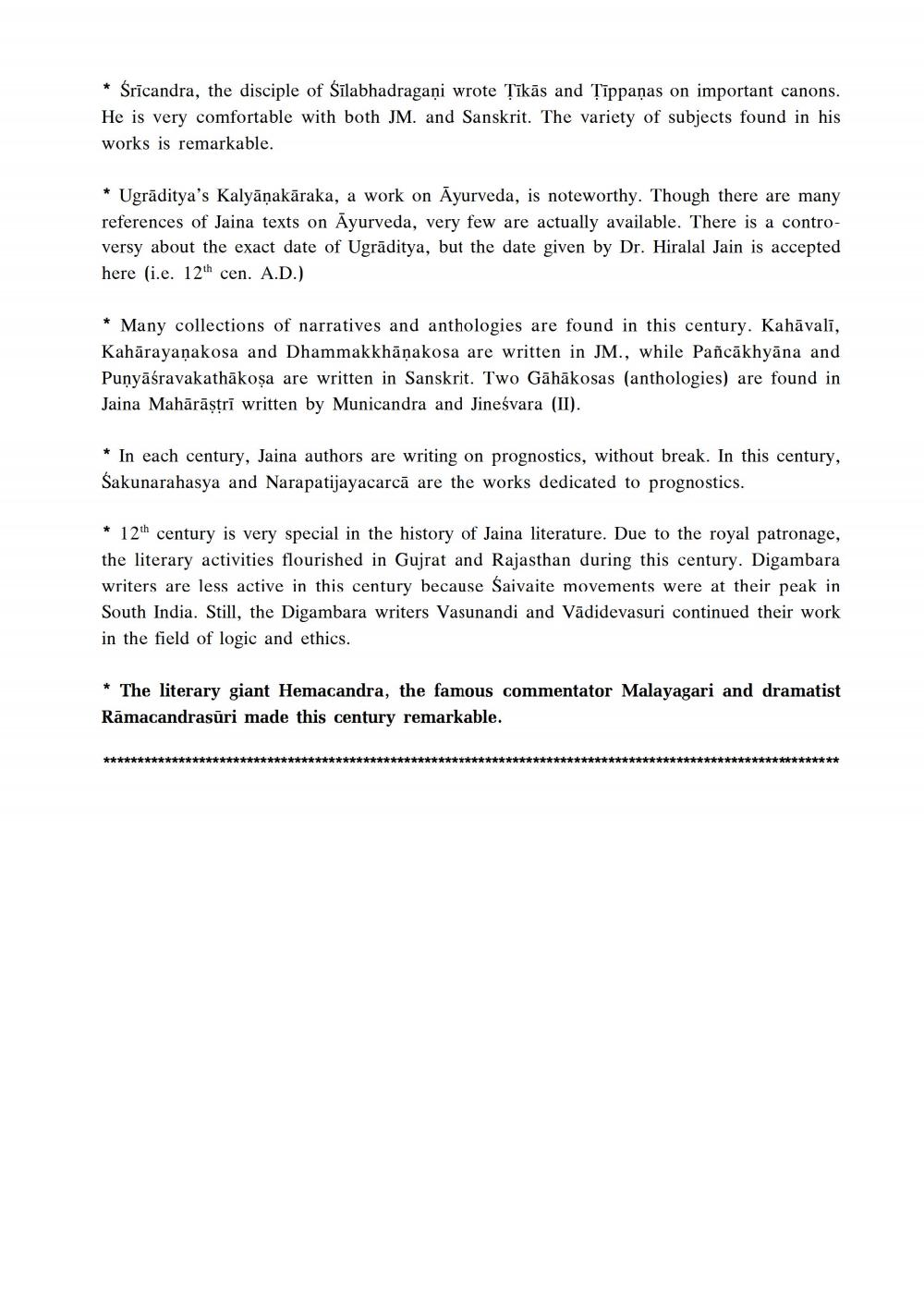Book Title: Brief Survey of Jaina Prakrit and Sanskrit Literature Part 3 Author(s): Nalini Joshi Publisher: Sanmati Tirth Prakashan Pune View full book textPage 7
________________ * Śrīcandra, the disciple of Sīlabhadragani wrote Tīkās and Tīppaņas on important canons. He is very comfortable with both JM. and Sanskrit. The variety of subjects found in his works is remarkable. * Ugrāditya's Kalyāņakāraka, a work on Ayurveda, is noteworthy. Though there are many references of Jaina texts on Ayurveda, very few are actually available. There is a controversy about the exact date of Ugrāditya, but the date given by Dr. Hiralal Jain is accepted here (i.e. 12th cen. A.D.) * Many collections of narratives and anthologies are found in this century. Kahāvali, Kahārayanakosa and Dhammakkhāņakosa are written in JM., while Pañcākhyāna and Punyāśravakathākosa are written in Sanskrit. Two Gāhākosas (anthologies) are found in Jaina Mahārāștri written by Municandra and Jineśvara (II). * In each century, Jaina authors are writing on prognostics, without break. In this century, Śakunarahasya and Narapatijayacarcă are the works dedicated to prognostics. * 12th century is very special in the history of Jaina literature. Due to the royal patronage, the literary activities flourished in Gujrat and Rajasthan during this century. Digambara writers are less active in this century because Śaivaite movements were at their peak in South India. Still, the Digambara writers Vasunandi and Vādidevasuri continued their work in the field of logic and ethics. * The literary giant Hemacandra, the famous commentator Malayagari and dramatist Rāmacandrasūri made this century remarkable. ************************************************************************************************************Page Navigation
1 ... 5 6 7 8 9 10 11 12 13 14 15 16 17 18 19 20 21 22 23 24 25
